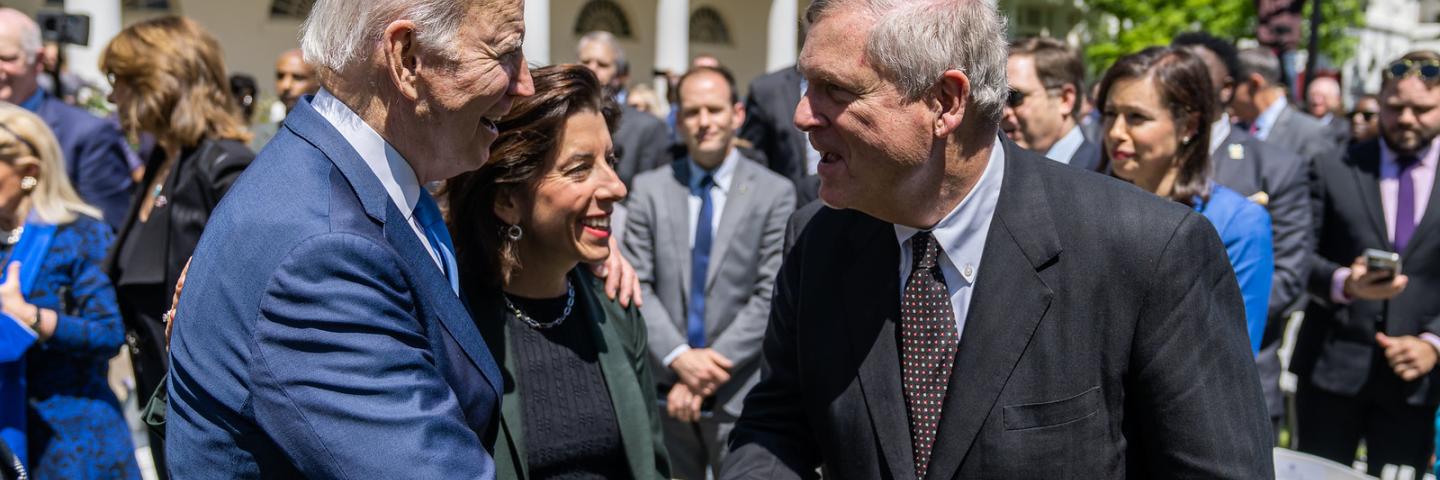President Biden, USDA Announce Investment in 3 Oregon Watershed Infrastructure Projects to Benefit Rural and Historically Underserved Communities

Agriculture Secretary Tom Vilsack announced the U.S. Department of Agriculture (USDA) will invest $420 million in 132 infrastructure projects in 31 states, including a $2,770,095 investment in 3 projects in Oregon.
Portland, Ore., April 21, 2022 – Agriculture Secretary Tom Vilsack announced the U.S. Department of Agriculture (USDA) will invest $420 million in 132 infrastructure projects in 31 states, including a $2,770,095 investment in 3 projects in Oregon. These projects include rehabilitating dams, flood prevention, and watershed restoration projects, and they are part of the Biden-Harris Administration’s implementation of the Bipartisan Infrastructure Law (BIL), building on a $166 million nationwide investment announced earlier this year.
"The Bipartisan Infrastructure Law is a once-in-a-generation opportunity to rebuild our infrastructure, create good-paying jobs and build new economic opportunity here in Oregon,” said Ron Alvarado, Oregon State Conservationist for USDA’s Natural Resources Conservation Service (NRCS).
“Across the West, drought levels persist. Our watershed programs assist communities in becoming more resilient to natural disasters through planning and project implementation. These multi-benefit projects can improve water quality, restore habitat, and more efficiently deliver water to users. This funding exemplifies how our agency can respond swiftly to the ever-changing needs of communities.”
Today’s infrastructure announcement includes funding through two programs: the Watershed and Flood Prevention Operations (WFPO) Program provides technical and financial assistance for new watershed infrastructure, and the Watershed Rehabilitation Program (REHAB) upgrades existing NRCS dams.
Projects in Oregon include:
- East Fork Irrigation District Irrigation Modernization Project
Modernizing the East Fork Irrigation District (EFID) infrastructure will conserve water, reduce energy use, improve reliability, increase public safety, and enhance fish and wildlife habitat in the Hood River watershed. Funds will go towards design of high-priority laterals and the Dukes Valley Canal.
- Tumalo Irrigation District Modernization Project
The Tumalo Irrigation District Modernization Project will modernize up to 1.9 miles of Tumalo Irrigation District’s canals and 66.9 miles of laterals to improve water conservation, water delivery reliability, and public safety. The project will occur in phases over 11 years. By converting open irrigation ditches into a closed piped system, the project will reduce water loss from canals by up to 48 cubic feet per second (cfs) or 4.9 billion gallons per season. Water saved from the project will be permanently protected in the Deschutes River and Tumalo Creek, benefitting fish and wildlife habitat. The project also will deliver water to irrigators in a safer, more efficient manner and reduce energy consumption from pumping. Funds will be used for design phase of converting Project Group 4 from a canal to pipe.
- Owyhee Irrigation District Modernization Project
In recent years, the Owyhee Irrigation District has faced droughts that limit water supply to irrigators. The design and age of the District's conveyance system no longer meets its obligations. To address these concerns, funds will be used to implement ag-water management and conservation practices and rehabilitate the conveyance system to improve water delivery reliability and water conservation along the District infrastructure. Modernizing the conveyance infrastructure will enable opportunities to benefit the local agricultural community by improving drought resilience and reducing inefficiencies associated with the current system.
In total, NRCS received $918 million of BIL funding to allocate through its watershed programs. In addition to WFPO and REHAB, this includes funds for Emergency Watershed Program (EWP) to help communities recover from natural disasters. NRCS will continue to assist communities as it receives disaster requests.
A full list of projects is available on NRCS’ Bipartisan Infrastructure Law webpage.
How Communities Can Get Help
NRCS encourages communities to engage with their local project sponsors, participate in developing a sound conservation plan that serves to protect and preserve local watersheds, and connect with their local NRCS office to learn more about Watershed Program assistance.
More Information
Since 1948, NRCS’ watershed programs have designed and built 11,850 dams, constructed water storage structures, flood management systems, stabilized streambanks, relocated residences, redirected stream flows, re-established wildlife habitat and more to save lives and protect watersheds.
USDA touches the lives of all Americans each day in so many positive ways. Under the Biden-Harris Administration, USDA is transforming America’s food system with a greater focus on more resilient local and regional food production, fairer markets for all producers, ensuring access to safe, healthy and nutritious food in all communities, building new markets and streams of income for farmers and producers using climate smart food and forestry practices, making historic investments in infrastructure and clean energy capabilities in rural America, and committing to equity across the Department by removing systemic barriers and building a workforce more representative of America. To learn more, visit usda.gov.
Release No.: 2022-04-003
Contact: ORInfo@usda.gov
#
USDA is an equal opportunity provider, employer and lender.

